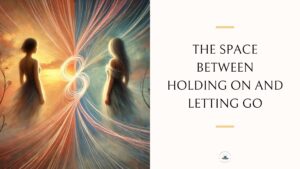The silent treatment can be one of the most confusing and painful experiences for children. When a caregiver, intentionally or not, withdraws emotionally and refuses to engage, the child is left in a state of uncertainty. As adults, those early experiences can deeply shape how we relate to others and ourselves, often in ways we don’t fully understand until later.
The Emotional Absence in Childhood
Children are wired for connection. They rely on their caregivers to help them understand their emotions and experiences. When faced with emotional silence, they don’t have the capacity to understand that the problem lies with the caregiver’s own limitations. Instead, the child internalizes this withdrawal as rejection, or worse, that there’s something inherently wrong with them.
This emotional absence leaves a lasting imprint. Over time, the nervous system learns to navigate the world with a deep sense of uncertainty, fluctuating between seeking connection and fearing rejection. Without the crucial attunement from caregivers, a child’s sense of self-worth can become tied to the behaviors and responses of others.
How These Early Experiences Shape Adult Relationships
As adults, the wounds of silent treatment can show up in relationships in subtle and not-so-subtle ways. Some may reenact the withdrawal they experienced as children, pulling away emotionally when they feel threatened or vulnerable. Others may overcompensate, becoming hyper-attuned to others’ needs in an effort to prevent the rejection they fear.
In both cases, the adult self is often acting out old dynamics, replaying early childhood experiences in their present-day relationships. Even though the circumstances are different, the nervous system responds as if it is still living in that past. Emotional withdrawal, fear of intimacy, or even conflict avoidance may stem from that early sense of uncertainty and fear created by the silent treatment.
Understanding Through the Lens of Parts Work
When we explore these patterns through the lens of parts work, it becomes clear that different parts of the self take on these learned roles. A hurt, child-like part may remain frozen in the fear and confusion of being ignored, while a protective part takes on the task of creating distance, cutting off emotional vulnerability to prevent further hurt.
By understanding these different parts of ourselves, we can begin to see how they are acting in the present, even though their origins lie in the past. The adult self might be unaware of how much these parts are running the show—keeping the old wounds alive and preventing new, healthier patterns from emerging.
Breaking Free from the Past
Healing from the effects of the silent treatment is not about dismissing or downplaying the hurt. Instead, it’s about recognizing the parts of us that were shaped by those early experiences and bringing compassion to the child within who had to endure the confusion and pain of emotional absence.
Acknowledging that the silent treatment was a reflection of the caregiver’s limitations, not the child’s worth, is a key step in this process. It allows us to soften the grip that these old patterns have on our lives and open ourselves to new ways of connecting—ways that are grounded in safety, trust, and emotional presence.
Healing Is Possible
The silent treatment can leave a deep wound that shapes how we see ourselves and how we relate to others. But with compassionate understanding and the courage to explore those parts of ourselves that developed in response to this early pain, healing is not only possible but deeply transformative.
By honoring what happened and recognizing how it still influences us, we can begin to rewrite those old patterns and build relationships that are healthier, more secure, and more grounded in connection rather than fear.
Healing doesn’t mean forgetting the past—it means understanding it, so we can break free from it.
Embracing Shadows, Illuminating Hope,
Chelsey Fjeldheim, LCSW
Empowering Souls on the Path of Healing
Copyright © 2024 Chelsey Fjeldheim, Courage Speaks Counseling




